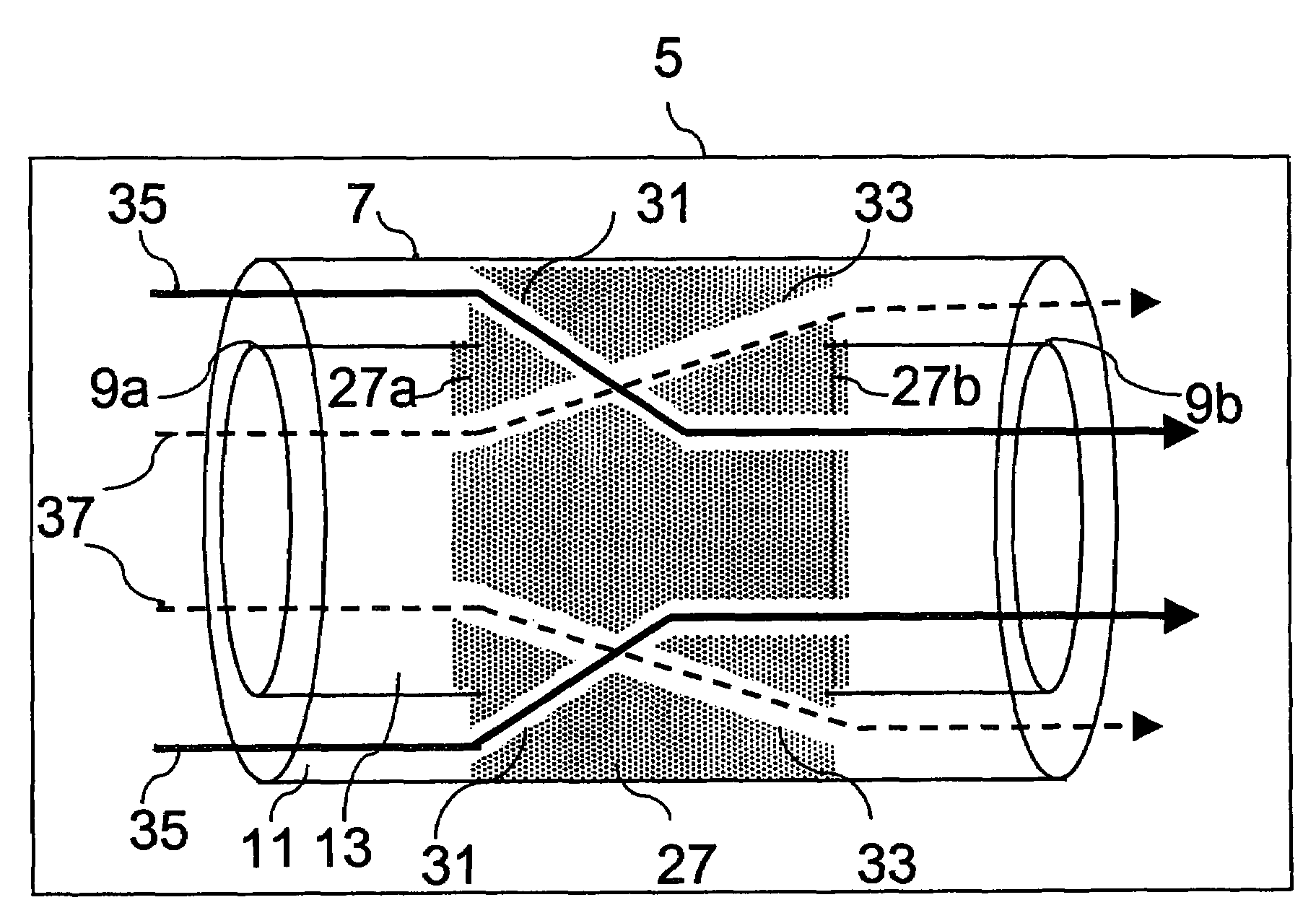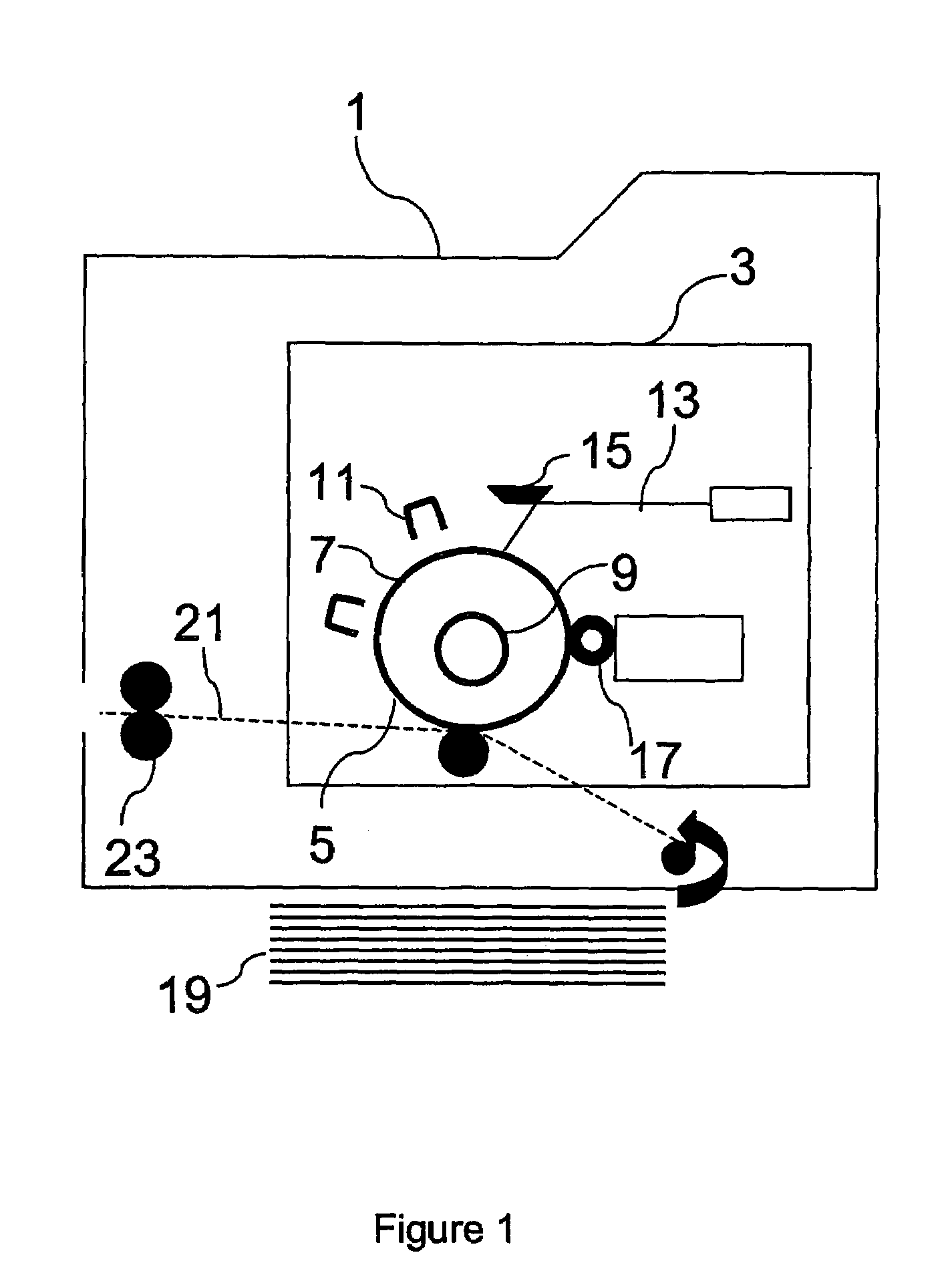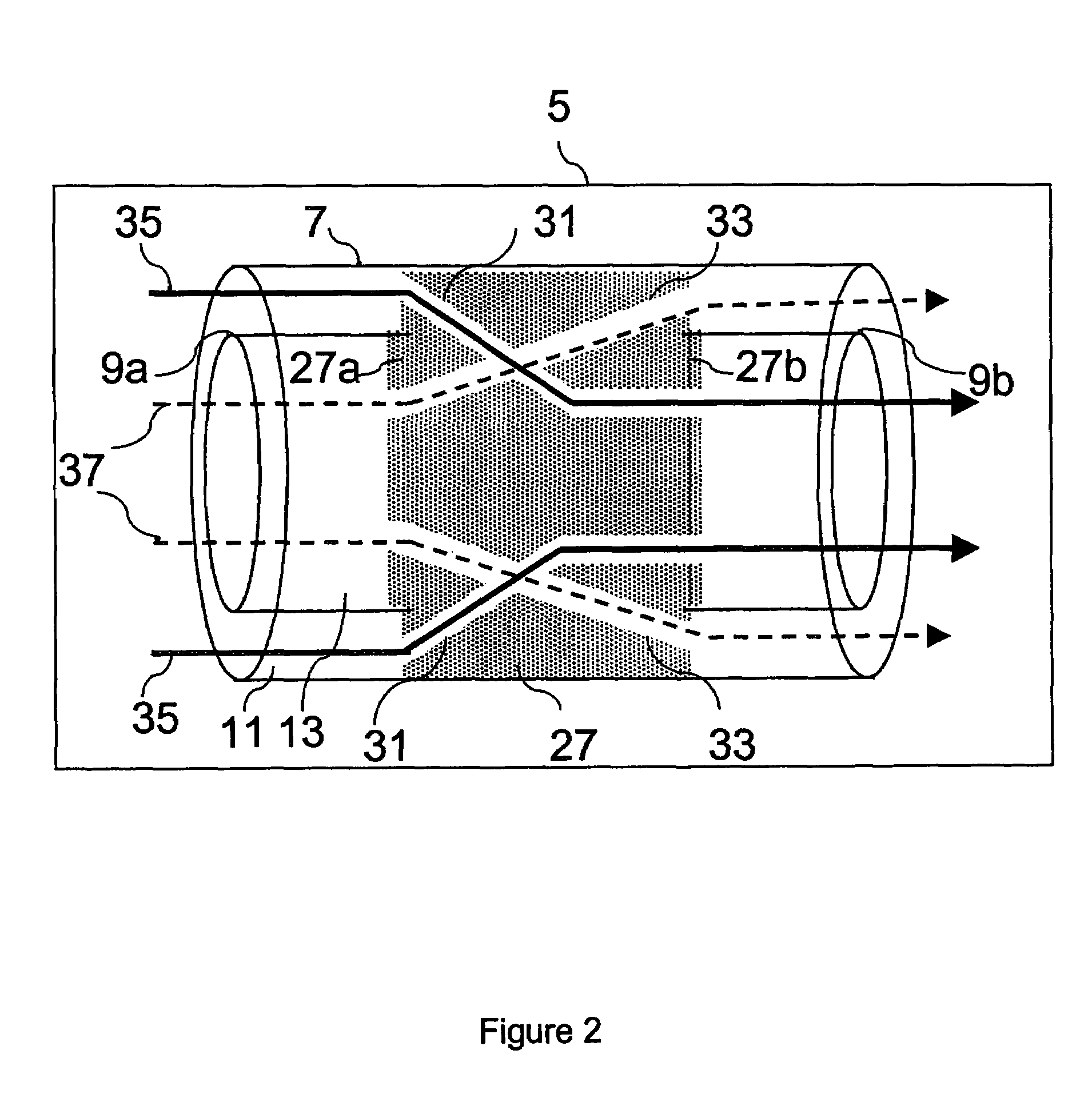Roller for a printer and a method of cooling the roller surface
a technology of rollers and printers, applied in the direction of moving conduit heat exchangers, indirect heat exchangers, lighting and heating apparatus, etc., can solve the problems of reduced cooling capacity, print artifacts, and temperature gradients in axial directions along the surface, so as to reduce the temperature gradient over the rollers and improve cooling efficiency.
- Summary
- Abstract
- Description
- Claims
- Application Information
AI Technical Summary
Benefits of technology
Problems solved by technology
Method used
Image
Examples
Embodiment Construction
[0032]FIG. 1 shows a schematic drawing of an electrophotographic printer 1. The operation of an electrophotographic printer is known in the background art. The heart of the printer 1 is the print engine 3. The print engine 3 includes an image-bearing roller 5. The image-bearing roller 5 includes an outer tube 7 and an inner tube 9. A photoconductive layer (not shown) is applied on the surface of the image-bearing roller 5. The photoconductive layer which is an insulator in the dark and a conductor when exposed to light. Initially, the photoconductive layer is given a total positive charge by the charge corona wire 11, which is a wire with an electrical current running through it. As the drum revolves, the printer shines a tiny laser beam 13 across the surface to discharge certain points, by reflecting the laser beam on a movable polygonal mirror 15. In this way, the laser “draws” the letters and images to be printed as a pattern of electrical charges, i.e. an electrostatic image. Af...
PUM
 Login to View More
Login to View More Abstract
Description
Claims
Application Information
 Login to View More
Login to View More - R&D
- Intellectual Property
- Life Sciences
- Materials
- Tech Scout
- Unparalleled Data Quality
- Higher Quality Content
- 60% Fewer Hallucinations
Browse by: Latest US Patents, China's latest patents, Technical Efficacy Thesaurus, Application Domain, Technology Topic, Popular Technical Reports.
© 2025 PatSnap. All rights reserved.Legal|Privacy policy|Modern Slavery Act Transparency Statement|Sitemap|About US| Contact US: help@patsnap.com



